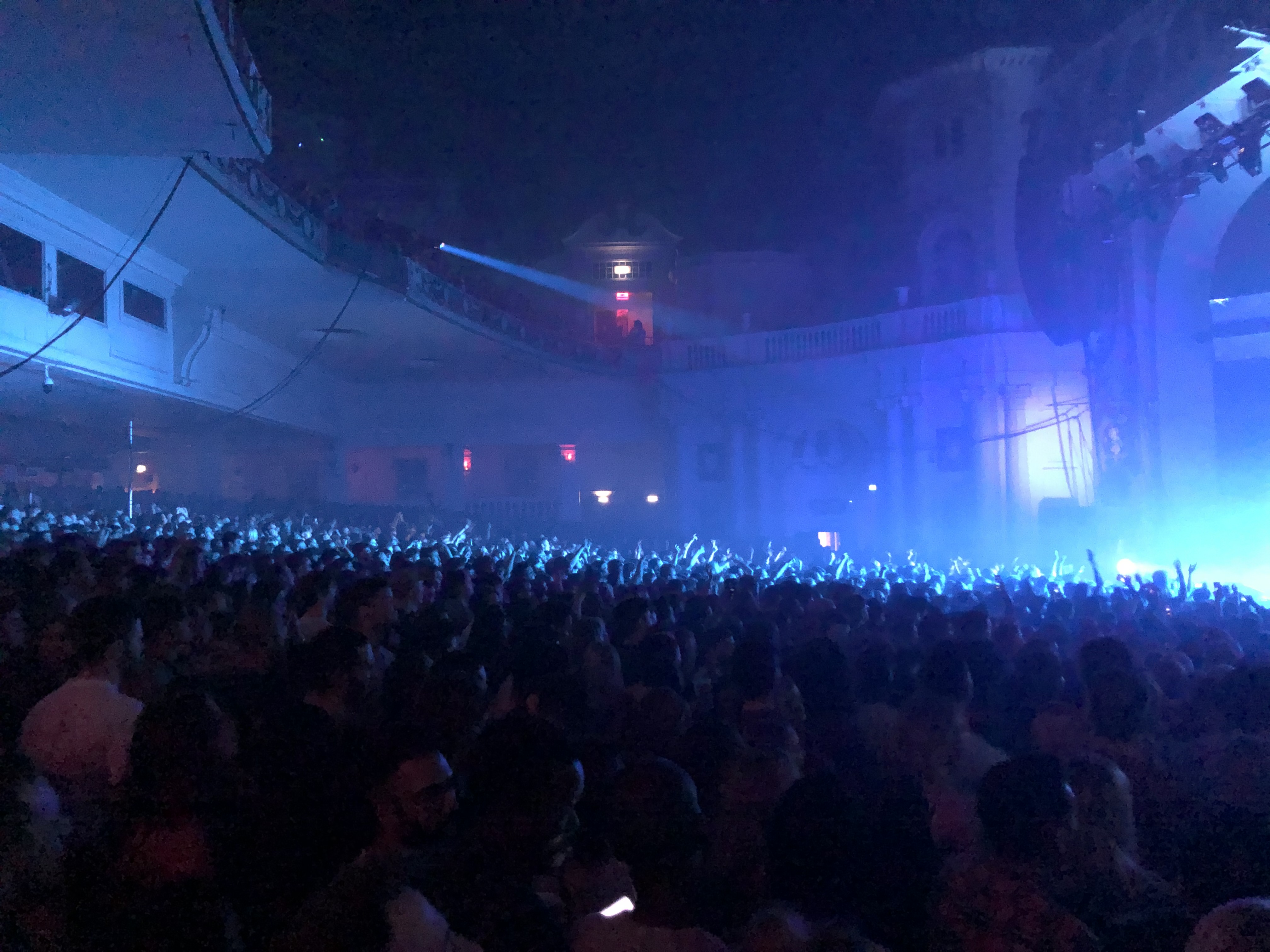On tour with Flume and his 16 Lightpad Blocks
The electronic producer puts Blocks in the centre of his spectacular live show
Flume performs at the 02 Brixton Academy, London in 2019
Famed for the spectacle of his shows as much as the distorted, whiplashing beats that have made him one of today’s best-selling electronic artists, Flume introduced something to the stage that no producer ever has before.
He and his team customized an array of 16 Lightpad Blocks to launch clips, control effects, and pique the audience with a piece of future-tech that’s pure Flume.
During the European leg of the tour, the Australia-born producer arranged eight Blocks in a row near the lip of the stage. He drummed and tapped rapid-fire, sometimes pausing to tweak a sound’s pitch by pressing into their MPE surfaces. Each touch left a comet-like light trail.
He put another eight Lightpads elsewhere on stage, arranging them in a Tetris shape that made the arc of his clip-launching more interesting to watch.

The Lightpad Block is one of Flume’s favorite composition tools, according to Chris Legaspi. Chris, half of the Nerdmatics duo who engineer the sound, lights, and magic of live shows around the world, customised the Lightpad array for Flume.
We asked Chris why he decided to pioneer a multi-Lightpad array, using ROLI’s Littlefoot scripts with Max/MSP.
Our criteria for a live performance setup was to use a controller that’s highly expressive, modular, has great development tools, and fits the aesthetic of Flume’s live show. The Lightpad Blocks hit every part of our criteria and then some. Aesthetically they look amazing. You can connect them together to form a unique playable layout. The development tools are clear and easy to understand. And like all ROLI instruments, they’re MPE-capable which makes them very expressive. So the decision to use them as a live performance tool was easy.

What did he program the Blocks to do, exactly?
We programmed the Lightpads to output a variety of MIDI messages and automate presets and functions in real time. Depending on the part and song they could perform a simple task like controlling the ADSR of a synth or VST, or more complex sequencing of several instruments and effect at the same time. It just depends on what’s suitable and meaningful for each song.
We needed a customizable controller that you could program from the ground up to provide real-time switching of presets, notes, cc values, and program changes via automation. The Lightpad can do this. But the problem was that most controllers can’t, because of a lack of development tools and support for developers like me. ROLI’s development tools for BLOCKS solved the problem. We used a combination of BLOCKS code and Max/MSP to customize our setup and achieve our own unique take on what a live performance setup is capable of.
Combining light and sound in a customized audiovisual setup went down really well with the audiences, Chris said. Team Flume is now interested in trying out LUMI, and seeing what they can pioneer what another spectacular light-up interface.
Join the ROLI community